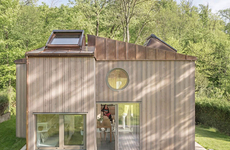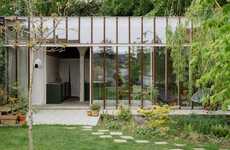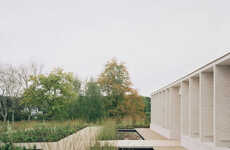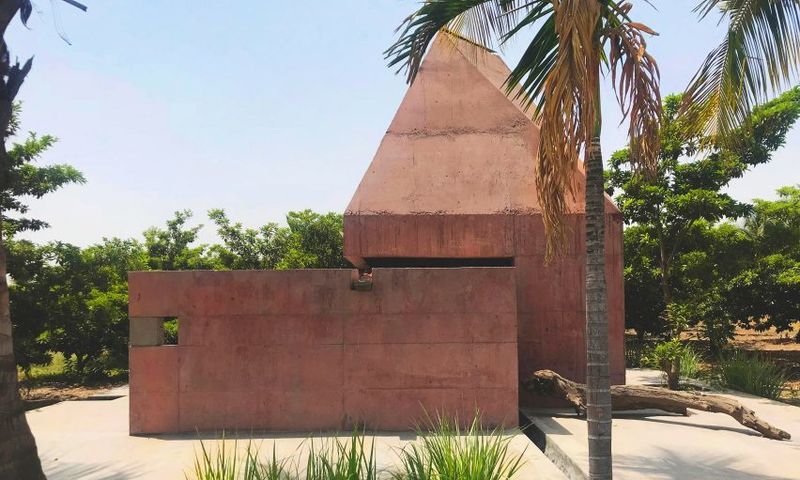
Karan Darda Architects Boasts a Sculptural Construction
Kalin Ned — July 23, 2018 — Art & Design
References: karan-darda-architects-krda.divisare.pro & dezeen
For its minimalist meditation space in Pune, India, local studio Karan Darda Architects relies on a sculptural aesthetic and a functional layout. The exterior design of the structure is made out of a red brick wall that offers a strong juxtaposition with the surrounding orchard of chikoo trees. Although initially, the concrete structure evokes a strong contrast, its red-ish hue subtly references the dynamic of the earth.
Located in a farming region, the minimalist meditation space is erected in honor of the Hindu deity Shiva and provides space for individuals to conduct their daily worship. Karan Darda Architects keep tradition in mind, while they stylistically reinterpret the minimalist meditation space with strong references to an architectural design that communicates sculptural merit.
Located in a farming region, the minimalist meditation space is erected in honor of the Hindu deity Shiva and provides space for individuals to conduct their daily worship. Karan Darda Architects keep tradition in mind, while they stylistically reinterpret the minimalist meditation space with strong references to an architectural design that communicates sculptural merit.
Trend Themes
1. Minimalist Meditation Spaces - The minimalist approach to meditation spaces offers opportunities to create unique designs that prioritize functional layouts and sculptural aesthetics.
2. Sculptural Architecture - The use of sculptural elements in architecture allows for the creation of visually striking and functional spaces that can be used for religious and meditative purposes.
3. Traditional Design Reinterpretation - Reinterpreting traditional designs with contemporary elements can result in unique and culturally significant spaces that honor the past while embracing modernity.
Industry Implications
1. Architecture - Incorporating sculptural elements into architectural design offers opportunities to create visually striking and functional spaces for a variety of purposes.
2. Religious Spaces - Designing spaces for religious worship requires sensitivity to tradition and culture, while also presenting opportunities to reinterpret traditional designs in new and interesting ways.
3. Meditation and Wellness - Creating minimalist and well-designed spaces for meditation and wellness can provide individuals and communities with much-needed opportunities for relaxation and mindfulness.
3.4
Score
Popularity
Activity
Freshness























